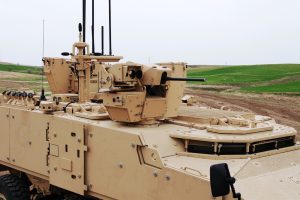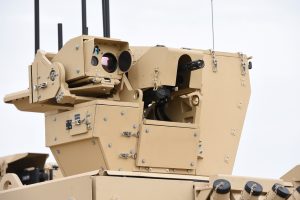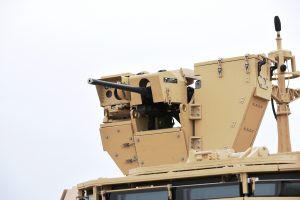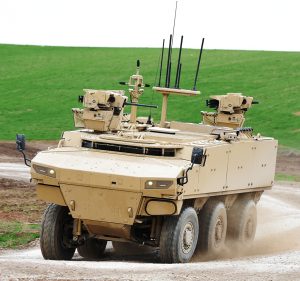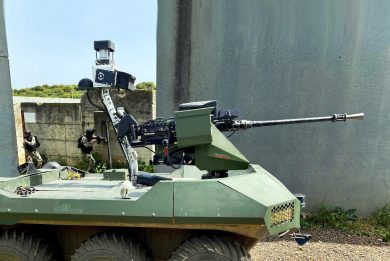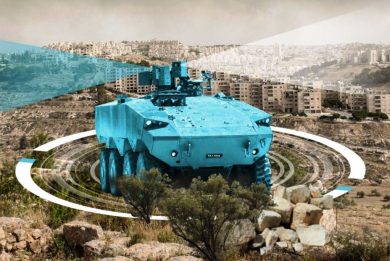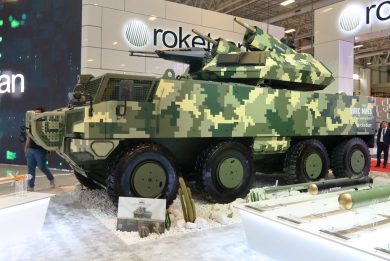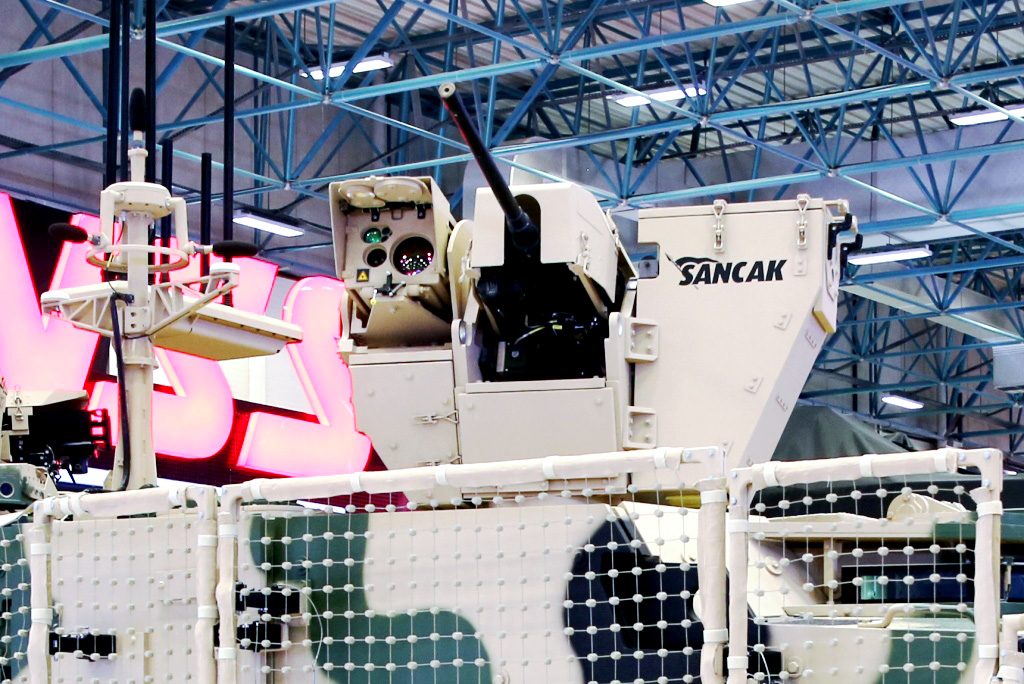
FNSS unveils the Sancak RCWS
By Paolo Valpolini
Introduced at IDEF 2019, albeit with no name, simply referred to as “RCWS”, the first FNSS weapon station was in fact already qualified since December 2018, 16 such turrets having been delivered to an undisclosed customer. The development has however been pushed further, and the RCWS is being unveiled in its improved version at IDEF 2021 under the name Sancak.
The look remains similar, the system being designed to host an M2 12.7 mm machine gun or an Mk19 40 mm automatic grenade launcher. Smaller calibre weapons, such as M240 or MAG58 7.62×51 mm machine guns can also be installed. “Among the improvements that we introduced we find an increase ammunition availability in all calibres,” FNSS Weapon Systems Design Manager Gökhan Özyurt tells EDR On-Line.
One of the key features of the RCWS was its ballistic protection, baseline being at STANAG Level 2; the improved version has not only a higher maximum protection level, EDR On-Line understood it went up one notch compared to the past, but this has also been extended in terms of protected area, further reducing vulnerability and increasing reliability under enemy fire.
All installable weapons being fed from the left, the optronic sensors package is therefore fitted to the right, and contains an uncooled thermal imager with a 640×512 sensor, FNSS offering also a cooled camera as option, a day HD camera with a 1280×720 sensor, and a laser rangefinder with a maximum measuring distance of 10 km. “The optronic package is linked in elevation to the weapon, as we consider this the best solution ensuring maximum accuracy,” Özyurt explains, although should a customer require a de-linked suite to be able to continue observation with the weapon at maximum elevation, in a non-threatening position, the company would be able to develop such a solution. Images are provided to the gunner on a display, an electronic zoom allowing to have a detailed picture shown in the wider view using the picture-in-picture mode; stabilised on two axis, the Sancak is provided with moving target acquisition and automatic target tracking, electronic image stabilisation adding to the weapon system stabilisation. To continue aiming at the target while superelevating the weapon when using an automatic grenade launcher, optronic sensors have a wide field of view.
“The man-machine interface is common to our two RCWS, the Sancak and the Caka, apart from very minor details,” Özyurt adds, explaining that in perspective the company might well develop a common HMI for all its unmanned weapon stations and turrets, which is not yet the case. Traverse and elevation speed exceeds 1 rad/s, acceleration being of over 1.5 rad/s2, the elevation arc being –20°/+60°. “These performances have been maintained in the upgraded version adopting more powerful servodrivers to cope with the increased weight due to the increased ammunition load and the improved protection,” Özyurt concludes. According to data released at IDEF the combat weight of the RCWS with armour (level not provided), M2 12.7 mm MG and 400 rounds, is 488 kg. The Sancak is fitted with an emergency manual mode allowing using the RWS even in case of power failure.
In July the Sancak completed qualification firing tests, and a few remaining tests have to be completed, FNSS planning to have the RCWS fully qualified by September. At IDEF the Sancak was exhibited on the new PARS IV 6×6 Special Operations Vehicle, this platform being fitted with two such RCWS to satisfy the need of Turkish Land Forces SF units. The Istanbul exhibition was the obvious scenario for FNSS to promote its new RWS on the international market.
Photos courtesy FNSS

